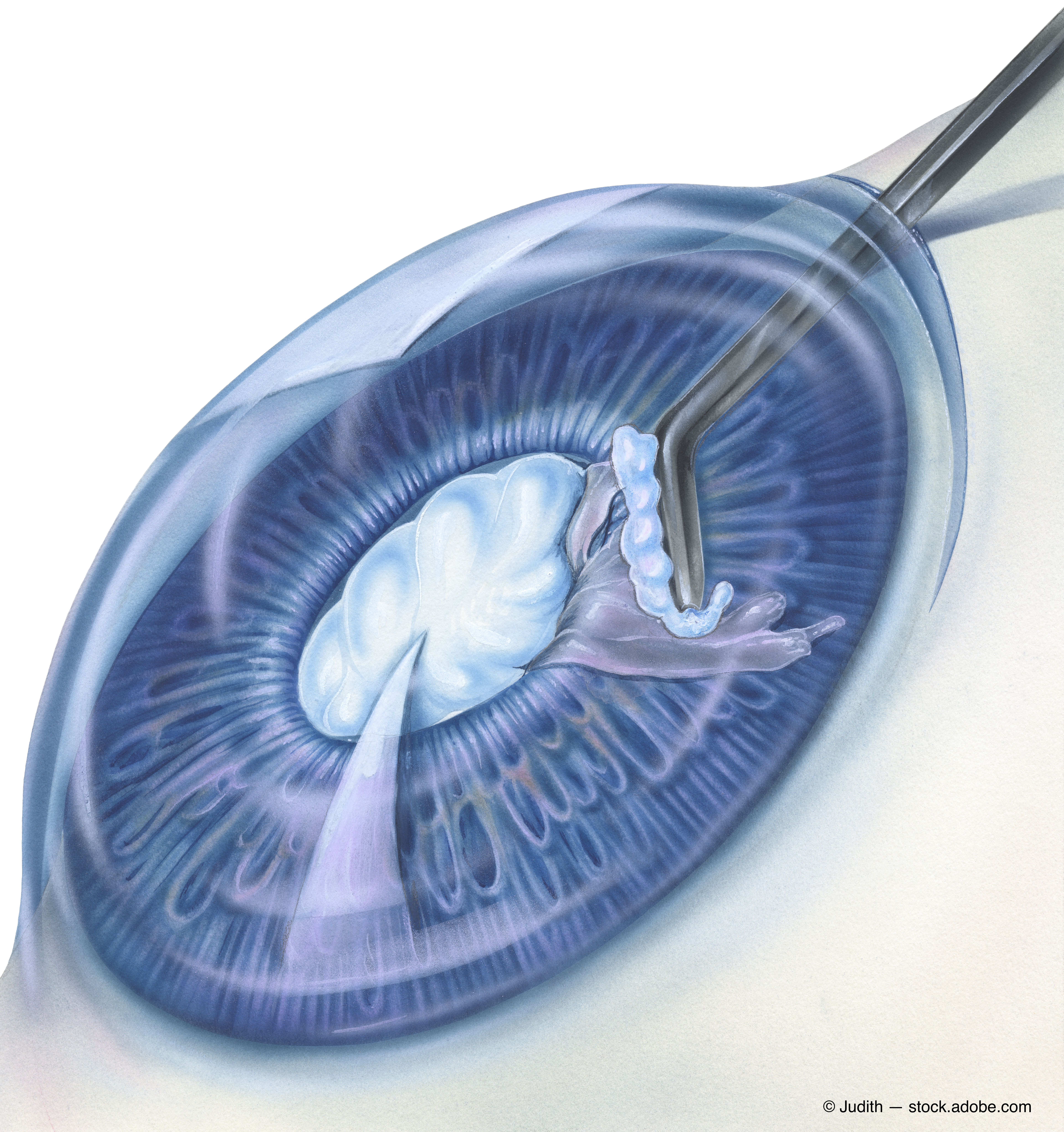Publication
Article
Digital Edition
The history of progress and innovation in cataract surgery
Author(s):
Innovations have made procedure quick, safe, effective.

Special to Ophthalmology Times®
Sir Harold Ridley implanted the first IOL on February 8, 1950. Charlie Kelman’s US Patent for phacoemulsification was filed July 25, 1967.
Following the introduction of these foundational elements of modern cataract surgery, myriad incremental innovations has brought about what is surely the fastest, safest and most effective surgical procedure in the world today.
These innovations include reducing the size and therefore the morbidity related to incisions, increasing the efficiency of lens extraction by optimizing the energy required to break up and evacuate the lens and improving the accuracy of intraocular lens power calculations to refine postoperative refractive outcomes.
Related: Small-aperture single-piece IOL could fill unmet need in patients
The development of adjunctive tools and tricks to alleviate the negative impact of pre-existing risk factors such as a small pupil or a weakened zonule has improved the safety of surgery, while the introduction of the femtosecond laser has created a new opportunity for innovation and precision in the treatment of astigmatism. All of these advances have combined to make a really big “wow” for our patients.
Clinical research has also produced important advances in our knowledge of cataract surgery. One of the most significant findings of recent studies of minimally invasive glaucoma surgery is confirmation of the substantial reduction of intraocular pressure in patients with mild to moderate glaucoma from cataract surgery alone.
Investigational device exemption randomized clinical trials of both the CyPass and the Hydrus demonstrated a remarkable concordance in terms of the proportions of subject eyes in the control groups with unmedicated mean diurnal IOP reductions greater than or equal to 20% from baseline (57.8% compared with 58.0%) and the reductions in the control groups in unmedicated mean diurnal IOP from baseline (both -5.3 mmHg).
Related: Study results show that surgical system decreases IOP in patients with POAG
These clinically significant reductions in IOP in glaucoma patients having cataract surgery alone has now been demonstrated by randomized, controlled clinical trials which provide the highest standard of evidence for this phenomenon.
Nevertheless, challenges remain to provoke the imagination of scientists and entrepreneurs as global demographics predict an increasing demand for cataract surgery.
For example, cystoid macular edema, or Irvine-Gass Syndrome, remains the most common complication associated with routine cataract surgery and can occur in patients with or without risk factors, such as diabetes or pre-existing macular disease.
While topical anti-inflammatory agents are considered prophylactic in the perioperative period, the use of intravitreal anti-VEGF agents as treatment has garnered support. This unpredictable and potentially sight-threatening complication deserves attention.
Another example of an unpredictable complication, capsule contraction syndrome, is related to fibrous metaplasia of lens epithelial cells similar to the pathogenesis of posterior capsular opacification and usually occurs within the first 3 months following surgery.
Related: Pre-operative IOP hints after cataract surgery
Changes in refraction may occur due to axial displacement or tilting of the IOL due to the capsular contraction.
Capsule contraction syndrome “has occurred in eyes with and without risk factors after the implantation of every IOL type (PMMA, silicone and acrylic).”
Identified risk factors include small capsulorhexis diameter, postoperative inflammation, pseudoexfoliation syndrome, uveitis, retinitis pigmentosa, history of retinal surgery, myotonic dystrophy and diabetes.
Treatment of capsular contraction syndrome has relied primarily on Nd:YAG laser relaxing anterior capsulotomies to eliminate constriction. Radial capsulotomies “can significantly enlarge the anterior capsule opening” but “the IOL can remain decentered and folded within the capsular bag, especially in case of shrinkage or thick fibrous anterior membrane. ”Femtosecond laser capsulotomies have advantages in terms of precision, and, despite difficulty cutting thickened capsular tissue, are “easier and safer than previous techniques. ”
Related: Minimize inflammation after cataract surgery
On a personal note, I remember the day during my junior year of residency when it suddenly dawned on me that my father had been left aphakic after his cataract surgery with Robert Sinskey, MD, the inventor of the Sinskey hook. I can recall seeing my father put in his contact using a pair of specially made glasses with only one lens.
At that time, “the implant” was still very controversial, as Ralph Nader had testified against its use before the FDA. It was actually testimony from Robert Young, who played “America’s doctor” Marcus Welby on television, that supported the benefits of the IOL.
One patient, actor Robert Young, testified that at age 72 he is able “to see and work again thanks to the miraculous medical breakthrough” of a pair of these artificial lenses.
The lesson of IOL development is that innovation is not for the weak of heart. Early phaco, just as much as early IOLs, did damage many eyes. Nevertheless, perseverance had great rewards, and it will no doubt continue to do so as we invent the next generation of cataract surgery innovations.
Early phaco, just as much as early IOLs, did damage many eyes. Nevertheless, perseverance had great rewards.
---
e: mark@markpackerconsulting.com
Packer is a consultant to Bausch + Lomb.

Newsletter
Don’t miss out—get Ophthalmology Times updates on the latest clinical advancements and expert interviews, straight to your inbox.





